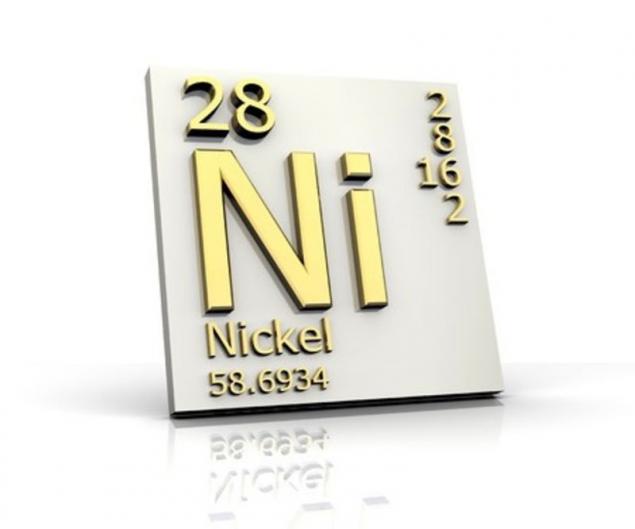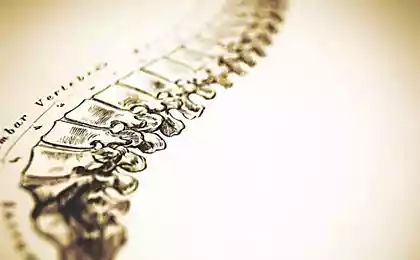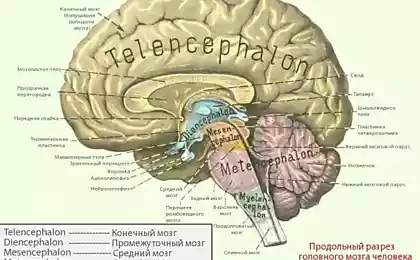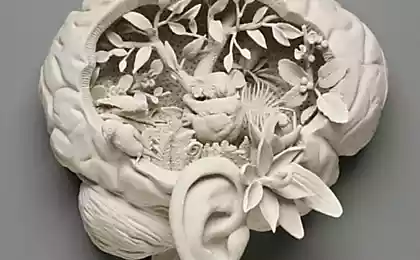165
Nickel: Nanny for the nervous system
Nickel (Ni) In the human body, nickel participates in redox processes, breathing, hematopoiesis, reduces the effects of adrenaline, exerting a calming effect on the nervous system. The daily requirement of the human body is 100-200 mcg. Nickel deficiency in the body can develop when this element is administered in an amount of 50 μg / day or less.

In human organs, nickel is just in the liver, pancreas and pituitary gland. Nickel is selectively concentrated in the black matter of the middle brain, which is responsible in the brain for positive emotions with pleasant surprises. Nickel is deposited in the pancreas and parathyroid glands. The thyroid and adrenal glands contain relatively high concentrations of nickel. Nickel content increases with age in the lungs. In the human gastrointestinal tract, from 1 to 10% of nickel received from food is absorbed. Nickel coming in with water is absorbed by 20-25%. Certain foods reduce its absorption: milk, coffee, tea, orange juice and ascorbic acid. Thus, nickel is poorly absorbed (less than 10%) if consumed with typical diets. Nickel absorption increases with iron deficiency, pregnancy and breastfeeding.
Nickel with serum albumin is transported. In the blood plasma, nickel is mainly bound to the proteins nickeloplasmin (alpha-2-macroglobulin) and alpha-1-glycoprotein. Nickel is excreted from the body mainly with feces (up to 95%) and in small quantities with urine, then bile.Biological role in the human body. There is little information about the biological role of nickel. It is believed that the biological role of nickel is to participate in the structural organization and functioning of the main cellular components – DNA, RNA and protein. At the same time, it plays a role in the hormonal regulation of the body. Nickel inhibits the effect of adrenaline, reduces blood pressure, has a calming effect on the central nervous system. Under the influence of nickel in the body, the excretion of corticosteroids in the urine doubles, the antidiuretic effect of pituitary extract increases.At the beginning of the XX century. it was found that the pancreas is rich in nickel. When administered after insulin nickel, the effect of insulin increases, and thereby increases hypoglycemic activity.In its effect on blood formation, nickel is close to cobalt. (Cobalt is a powerful stimulant of erythropoiesis, stimulates the synthesis of hemoglobin, increases the absorption of available iron). Nickel in combination with cobalt, iron, copper is also involved in the processes of hematopoiesis, and independently - in the exchange of fats, providing cells with oxygen. Because nickel is essential for some animals, it is assumed that nickel is also essential for humans. The binding of divalent nickel to various ligands, including amino acids and proteins, is likely important in extracellular transport, intracellular communication, urinary, and bile nickel excretion. Nickel is believed to be a structural component of some enzymes.
Nickel influences enzymatic processes, oxidation of ascorbic acid, accelerates the transition of sulfhydryl groups to disulfide ones.
Nickel synergists and antagonists.Nickel antagonists include sulfur-containing amino acids, calcium, sulfur, iron, zinc, selenium, vitamin C. Signs of nickel deficiency. The nickel content decreases with anemia of various origins and chronic coronary insufficiency.
The essentiality of nickel has been demonstrated in animal experiments in which a decrease in nickel in the diet led to shortening of the hind limbs, hypopigmentation, lowering blood plasma and hematocrit cholesterol, reducing overall motor activity, slowing the growth of young animals and increasing their mortality. Pathological changes in the liver were also observed: a decrease in organ size, a decrease in glycogen content, activation of lipid peroxidation. Adding nickel to the diet of animals in an amount of 50-80 μg / kg per day eliminated these symptoms or prevented their development.The nickel content increases with myocardial infarction.Excessive intake of nickel can cause skin depigmentation (vitiligo).The main manifestations of excess nickel in the body: increased excitability of the central and autonomic nervous system, pulmonary and brain edema, allergic reactions of the skin and mucous membranes of the upper respiratory tract (vitiligo, dermatitis, rhinitis, etc.), tachycardia; anemia, reduced immune protection, increased risk of neoplasms in the lungs, kidneys, skin.Nickel is necessary: with hypertension, diabetes, asthenic conditions.Food sources of nickel:chocolate; nuts and seeds: sesame, poppy, macadamia, almonds, Brazil nut, walnut, sunflower seeds, pistachios, hazelnuts;fruit:avocado, pineapple, grapes, cherries, pears, figs, potassium, cranberries, raspberries, sea buckthorns, peaches, black currants, cherries, mulberries, apples;dried fruits:Raisins, figs dried, apricots, dates, prunes;Grains and legumes:beans, peas, buckwheat, maize, oats, millet, soft wheat, hard wheat, unpolished rice, wild rice, rye, soybeans, beans, lentils, barley;vegetables:parsnip, artichoke, horseradish, garlic;greens:Schnitt onions, parsley greens, rhubarb stalks, salad, celery greens, garlic greens, sorrel;mushrooms:The foxes. Quite a lot of nickel is contained in tea, cocoa, buckwheat and salad. published
P.S. And remember, just by changing your consciousness – together we change the world!
Source: www.pharmacognosy.com.ua/index.php/makro-i-mikro-chudesa/nikel-nyanya-dlya-nervnoj-systemy

In human organs, nickel is just in the liver, pancreas and pituitary gland. Nickel is selectively concentrated in the black matter of the middle brain, which is responsible in the brain for positive emotions with pleasant surprises. Nickel is deposited in the pancreas and parathyroid glands. The thyroid and adrenal glands contain relatively high concentrations of nickel. Nickel content increases with age in the lungs. In the human gastrointestinal tract, from 1 to 10% of nickel received from food is absorbed. Nickel coming in with water is absorbed by 20-25%. Certain foods reduce its absorption: milk, coffee, tea, orange juice and ascorbic acid. Thus, nickel is poorly absorbed (less than 10%) if consumed with typical diets. Nickel absorption increases with iron deficiency, pregnancy and breastfeeding.
Nickel with serum albumin is transported. In the blood plasma, nickel is mainly bound to the proteins nickeloplasmin (alpha-2-macroglobulin) and alpha-1-glycoprotein. Nickel is excreted from the body mainly with feces (up to 95%) and in small quantities with urine, then bile.Biological role in the human body. There is little information about the biological role of nickel. It is believed that the biological role of nickel is to participate in the structural organization and functioning of the main cellular components – DNA, RNA and protein. At the same time, it plays a role in the hormonal regulation of the body. Nickel inhibits the effect of adrenaline, reduces blood pressure, has a calming effect on the central nervous system. Under the influence of nickel in the body, the excretion of corticosteroids in the urine doubles, the antidiuretic effect of pituitary extract increases.At the beginning of the XX century. it was found that the pancreas is rich in nickel. When administered after insulin nickel, the effect of insulin increases, and thereby increases hypoglycemic activity.In its effect on blood formation, nickel is close to cobalt. (Cobalt is a powerful stimulant of erythropoiesis, stimulates the synthesis of hemoglobin, increases the absorption of available iron). Nickel in combination with cobalt, iron, copper is also involved in the processes of hematopoiesis, and independently - in the exchange of fats, providing cells with oxygen. Because nickel is essential for some animals, it is assumed that nickel is also essential for humans. The binding of divalent nickel to various ligands, including amino acids and proteins, is likely important in extracellular transport, intracellular communication, urinary, and bile nickel excretion. Nickel is believed to be a structural component of some enzymes.
Nickel influences enzymatic processes, oxidation of ascorbic acid, accelerates the transition of sulfhydryl groups to disulfide ones.
Nickel synergists and antagonists.Nickel antagonists include sulfur-containing amino acids, calcium, sulfur, iron, zinc, selenium, vitamin C. Signs of nickel deficiency. The nickel content decreases with anemia of various origins and chronic coronary insufficiency.
The essentiality of nickel has been demonstrated in animal experiments in which a decrease in nickel in the diet led to shortening of the hind limbs, hypopigmentation, lowering blood plasma and hematocrit cholesterol, reducing overall motor activity, slowing the growth of young animals and increasing their mortality. Pathological changes in the liver were also observed: a decrease in organ size, a decrease in glycogen content, activation of lipid peroxidation. Adding nickel to the diet of animals in an amount of 50-80 μg / kg per day eliminated these symptoms or prevented their development.The nickel content increases with myocardial infarction.Excessive intake of nickel can cause skin depigmentation (vitiligo).The main manifestations of excess nickel in the body: increased excitability of the central and autonomic nervous system, pulmonary and brain edema, allergic reactions of the skin and mucous membranes of the upper respiratory tract (vitiligo, dermatitis, rhinitis, etc.), tachycardia; anemia, reduced immune protection, increased risk of neoplasms in the lungs, kidneys, skin.Nickel is necessary: with hypertension, diabetes, asthenic conditions.Food sources of nickel:chocolate; nuts and seeds: sesame, poppy, macadamia, almonds, Brazil nut, walnut, sunflower seeds, pistachios, hazelnuts;fruit:avocado, pineapple, grapes, cherries, pears, figs, potassium, cranberries, raspberries, sea buckthorns, peaches, black currants, cherries, mulberries, apples;dried fruits:Raisins, figs dried, apricots, dates, prunes;Grains and legumes:beans, peas, buckwheat, maize, oats, millet, soft wheat, hard wheat, unpolished rice, wild rice, rye, soybeans, beans, lentils, barley;vegetables:parsnip, artichoke, horseradish, garlic;greens:Schnitt onions, parsley greens, rhubarb stalks, salad, celery greens, garlic greens, sorrel;mushrooms:The foxes. Quite a lot of nickel is contained in tea, cocoa, buckwheat and salad. published
P.S. And remember, just by changing your consciousness – together we change the world!
Source: www.pharmacognosy.com.ua/index.php/makro-i-mikro-chudesa/nikel-nyanya-dlya-nervnoj-systemy























